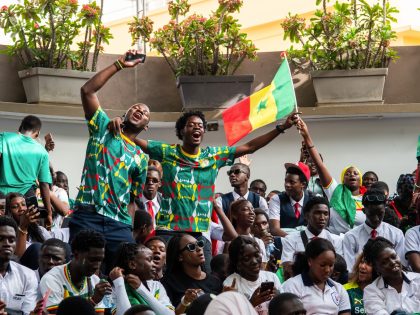Just one long war
The US is re-upping its failed "war on drugs" in Central America. The spin is they will fight "violence and poverty." This won't end well.

In an op-ed published by The New York Times, US vice-president Joe Biden announced the Government’s new plan to fight violence and poverty in Central America: “President Obama will request from Congress $1 billion to help Central America’s leaders make the difficult reforms and investments required to address the region’s interlocking security, governance and economic challenges.”
Central America here refers to three Governments: Honduras, Guatemala and El Salvador. Poor and violent countries like Nicaragua, run by left-wing Daniel Ortega, are not included. Neither are Panamá nor Costa Rica, both U.S. allies enjoying a better economic situation.
How will the U.S. dollars be spent? First, “through community-based policing, says Biden. It will “eradicate transnational criminal networks that have turned Central America into a hotbed for drug smuggling, human trafficking and financial crime.”
Biden has the credentials to talk about crime, he says. He crafted the 1994 crime bill to reduce violence in the U.S. during the Clinton presidency. The law funded community policing in the U.S., gave more money to the FBI and the DEA, incentivized the construction of more prisons and created new death penalty offenses. It was a bill celebrated for allocating money to fight violence against women, but criticized for ignoring racially discriminatory laws. Is that the model Central America needs?
Biden also wants “good governance” (meaning effective tax collection), “foreign investment” (meaning free trade agreements) and “transparency to ensure that international assistance is spent accountably and effectively.” To exemplify what he understands by “effective” international assistance, Vice-president Biden quotes the very controversial Plan Colombia from 1999 aimed at combatting “trafficking, grinding poverty and institutional corruption — combined with a vicious insurgency — that threatened to turn Colombia into a failed state.”
The problem for Biden is that fifteen years have passed since the Plan was approved and, although Plan Colombia keeps being celebrated in Washington as a ‘success story,’ there is an ugly side to that ‘international assistance.’
Plan Colombia made the country the biggest recipient of U.S. aid outside the Middle East. It is the reason why the deceased Hugo Chávez once called Colombia ‘the Israel of Latin America’.
But, “Colombia’s security gains are partial, possibly reversible, and weighed down by ‘collateral damage’”, as Adam Isacson, director of the Washington Office for Latin America, wrote in 2010. Yes, kidnappings by the different armed groups decreased and the military force doubled its budget. But Human Rights groups estimated that, amid the military violence, around 14,000 non-combatant civilians were killed. “Had that money been invested in education and infrastructure, Colombia today could be alongside Chile and Brazil,” says Isacson, who also recalls that, by 2010, Colombia’s Prosecutor-General was investigating 1,302 cases of extrajudicial killings by the security forces.
Another U.S. aid recipient in Colombia, the intelligence service called DAS (which has since been dismantled and transformed into two different units), has been under scrutiny for illegal surveillance and collusion with paramilitaries, writes Isacson. He is not alone.
José Miguel Vivanco, director of Human Rights Watch in Latin America, has also been one of the international critics of Plan Colombia. Mentioning the alliances between the military and paramilitary groups, Vivanco said that the U.S. didn’t know where the funds to fight the drug-trade guerrillas would end up. In 2000, when Plan Colombia was being discussed at the U.S. Congress, he said:
“Human Rights Watch remains convinced that the most important way that the United States can contribute to improving human rights protections in Colombia is to enforce the strict conditions on all military aid. Enforcement of the conditions contained in Public Law 106-246 would have contributed greatly to improving human rights protection, in my opinion.”
Unfortunately, the money from Plan Colombia ended up in some cases (not all of them investigated), in the hands of paramilitaries. (Here is a story called ‘The Dark side of Plan Colombia’ on how U.S. aid ended up financing agro-industrial projects owned by paramilitaries)
“Amnesty International USA has been calling for a complete cutoff of US military aid to Colombia for over a decade due to the continued collaboration between the Colombian Armed Forces and their paramilitary allies as well as the failure of the Colombian government to improve human rights conditions,” wrote Amnesty International ten years after Vivanco’s warning.
There are hundreds, thousands, of critiques to Plan Colombia, ranging from extrajudicial executions to poisonous chemicals in indigenous and peasant territories, where the coca plant grows [criminalizing those communities as well]. There are social movements, scholars, conferences and even movies talking about the failures of Plan Colombia. And the conclusion is loud and clear: it is not a success model. It is not a Master Plan.
The critiques have been useless to stop the ‘exportation’ of Plan Colombia. The Mérida Initiative or Plan México is one of those exported models to fight Mexican drug cartels. Some have linked the U.S. financial aid to the disappearances of the 43 students in Ayotzinapa and other disappearances in other regions of Mexico.
“Besides the nearly $3 billion that have come through the Mérida Initiative, there’s also Department of Defense money, and that money is going to train police forces and armed forces, that now we find are directly involved in attacks on the people, and particularly attacks on youth,” said Laura Carlsen, director of the Mexico City-based Americas Policy Program of the Center for International Policy. “The State Department has admitted that in that battalion [accused of killing 22 students in Tlatlaya, Mexico], although we don’t know because they won’t give us the names, there are five individuals that were trained in the United States.”
(Carlsen full interview on min. 37:02)
NACLA (the North American Congress for Latin America) concluded in an essay that “the United States will be using the same anti-drug policies in Central America as it has used in Colombia and Mexico, where results have been murky at best.” The analysis also reminded that former Secretary of State Hillary Clinton, just as Joe Biden, recommended Plan Colombia for Central America.
The U.S. Congress has to approve Obama and Biden’s Plan for Central America, while the details on how militaristic it will be, or what approach on crime it will have, is still to be determined. It doesn’t seem it will open the needed debate in the U.S., on how the war on drugs has been a failure and the direct cause of many of the problems the Plan tries to address.
If the Plan turns out to be an initiative to replicate Plan Colombia, it will just add to the extensive list of U.S. interventions that began in the Cold War and have brought more violence than peace to Central America. Just as a reminder, historian Greg Grandin explained for The Nation some months ago that the “Kaibiles” (an anti-communist unit in Guatemala, modeled after the United States Green Berets), which committed several massacres in the country when the U.S. financed an authoritarian regime and its death squads there, are now part of the drug cartel ‘Los Zetas’.
“You will find out why the Cold War and the drug war really is just one long war,” he wrote.



















